In-app messaging for on-demand apps: Transparent communication on demand

In an ideal situation, the on-demand experience requires little communication. There’s no waiting, no mistakes on an order, no software or technical issues, no traffic, no miscommunication – essentially zero friction. But, when the on-demand experience isn’t ideal, in-app messaging provides a convenient and easy way to coordinate or communicate transparently. If anything goes wrong, customer, driver, or vendor support is a tap and message away.
Questions about in-app messaging for on-demand?
On-demand needs convenient and transparent communication
Consider for a moment the potential missteps during an on-demand post-purchase experience for a delivery app. The following matrix demonstrates a few possibilities:
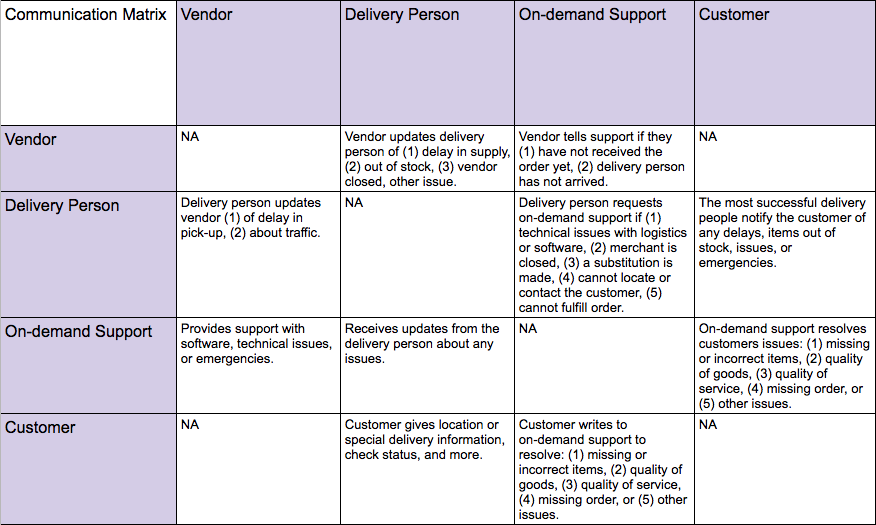
From this matrix, we can see how complicated it is to deliver the good or service and how different touch points can break down. Supporting customers, vendors, and drivers in their most frustrating moments can turn around a bad experience. A premium in-app messaging experience makes those communications simple, easy and familiar.
They’ll also help your supply-side or delivery-side be more successful and, hence, keep them satisfied with their work experience. In all cases of communication, when things go wrong, the most successful service providers will contact the customer directly to provide the most transparency. If the service is late, at the very least the communication can be transparent. Here are some examples that could have been easily solved by easy and convenient communication.
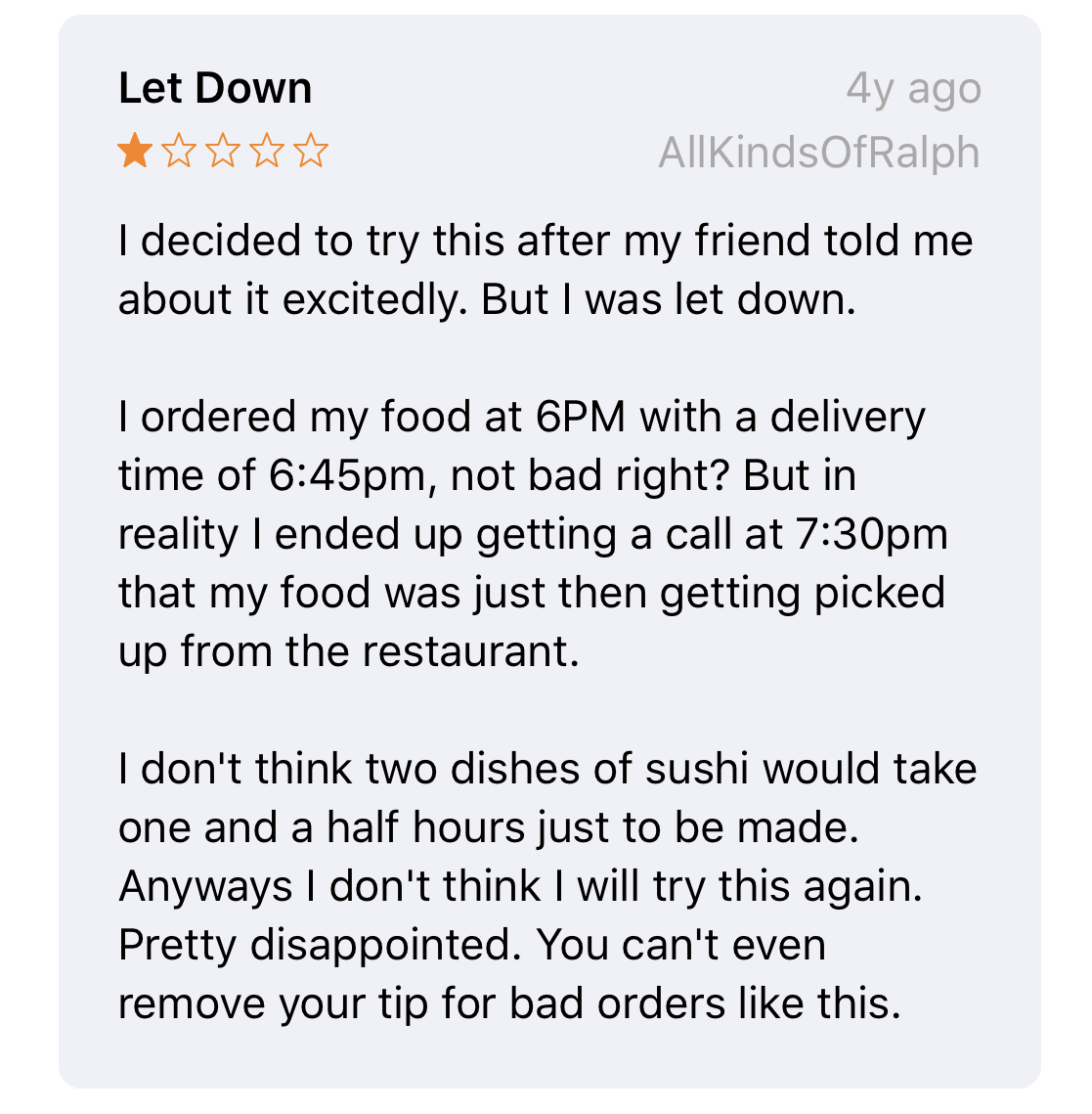
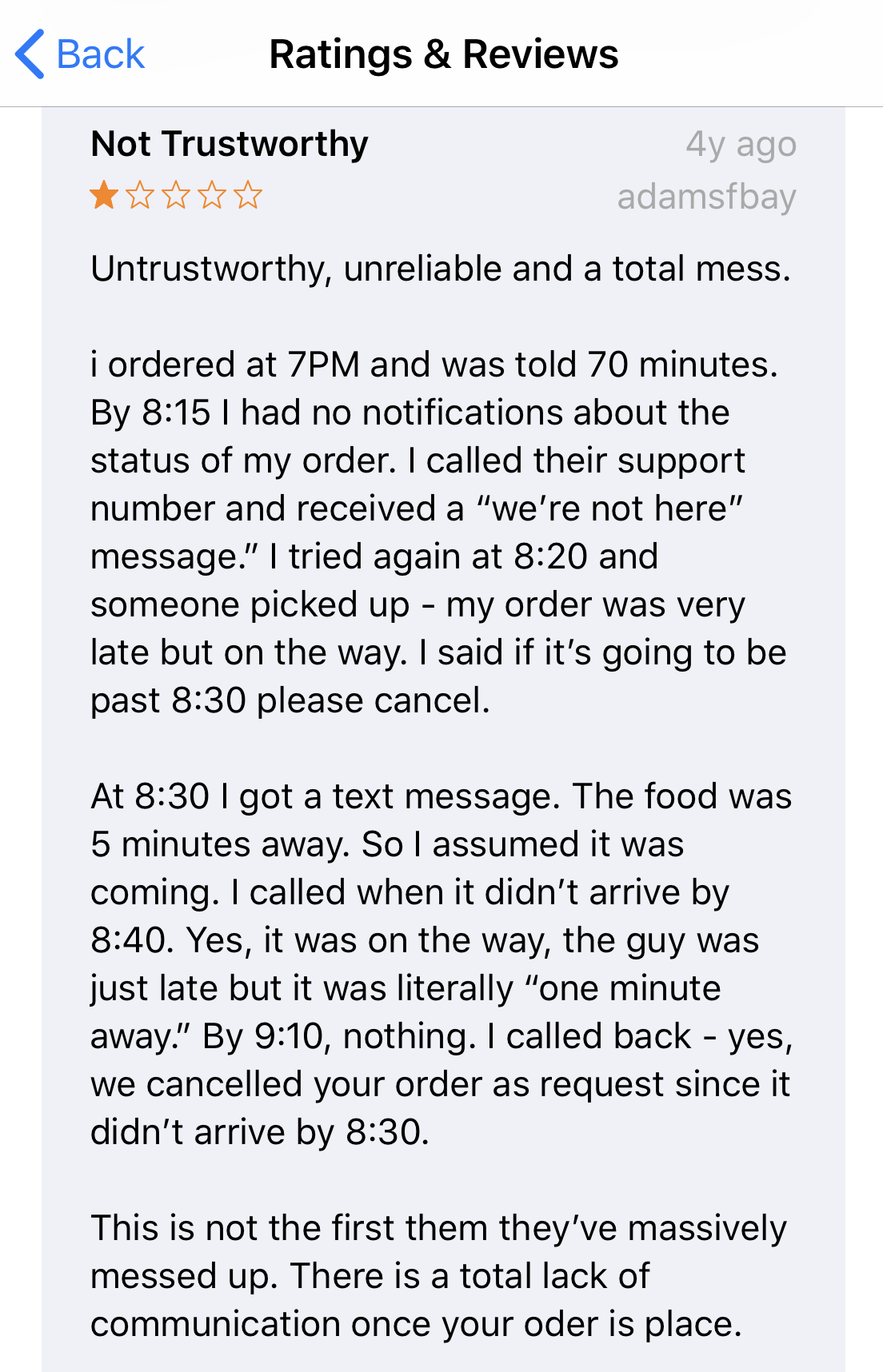
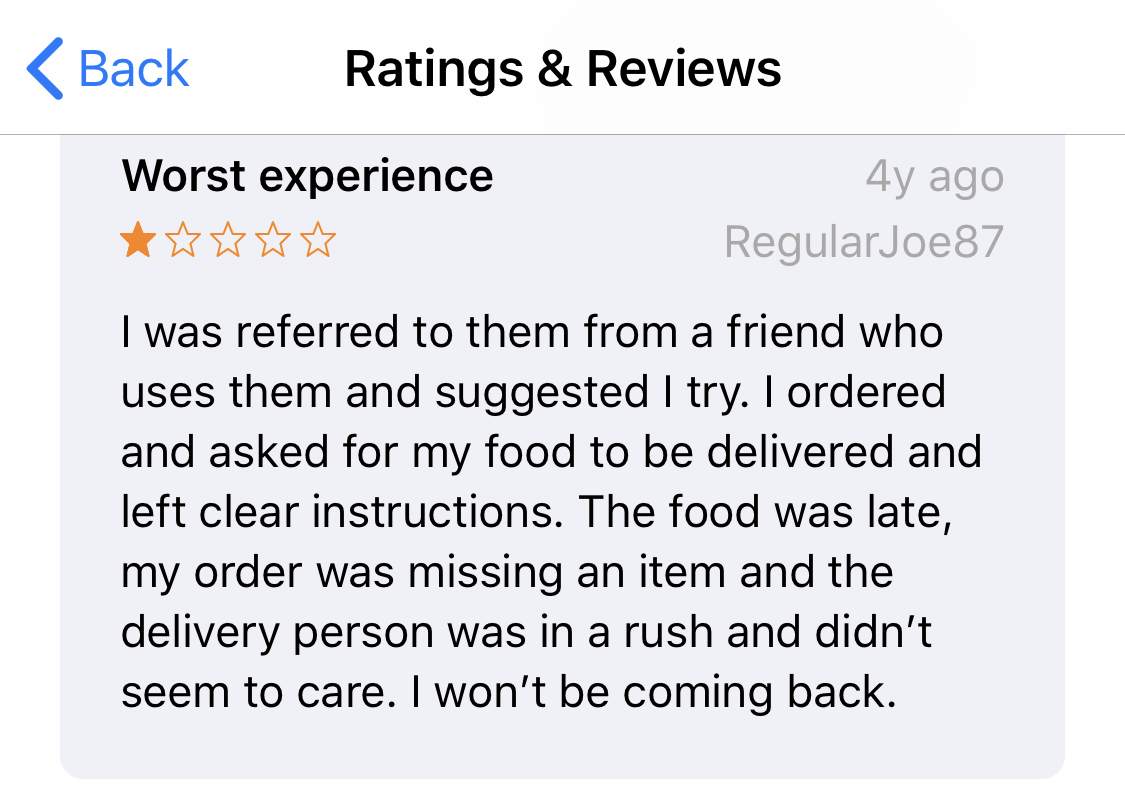
In all three examples, customers complained that there was little communication about their order: (1) it takes 90 minutes to receive a call; (2) there was a “total lack of communication”; (3) the customer had disappointed expectations about the service’s communication and quality.
In-app messaging can solve for transparent communication and improve post-purchase experiences for on-demand applications.
Many on-demand markets have homogeneous supply or low average order values (AOV). For example, Lyft coordinates rides that are essentially identical products to one another. As a result, their supply is mostly homogeneous. Food delivery apps deliver meals that are low average order value, say, $15 for lunch plus tax, fees, and tip, putting it around $22. Compared to a used car or even a home, the AOV of such apps is quite low.
Since many on-demand markets tend to have homogeneous supply or low average order value, in-app messaging will have less impact on conversion in on-demand and, instead, make the largest impact on the post-purchase experience (see our article on Marketplaces if you’d like to learn how messaging improves conversion and liquidity). It can coordinate among all the sides of the on-demand marketplace – from supply and demand to delivery and support – and bring easy and transparent communication to the entire process.

Your order is on its way
Ensure it gets there with Sendbird.
Leading on-demand companies are adding in-app messaging
In August 2017, Uber introduced in-app messaging to its applications to replace an undesirable user experience brought about by SMS. Uber Product Manager Jeremy Lermitte explained these reasons:
- In global markets, there was price sensitivity to SMS by both drivers and riders
- Outside the US, where some SMS was in place, there wasn’t technology to anonymize phone numbers, so drivers and riders were actually sharing contact information
- User wanted a consistent experience when travelling abroad, where they may not have a phone or voice plan
- Read receipts give visibility to driver or riders that their messages were received, so either side of the market could know that their message was read
The user experience is actually quite simple: the driver, car, and license plate shows up at the top of the message screen and the message is read aloud to drivers who can respond with a one tap thumbs up.
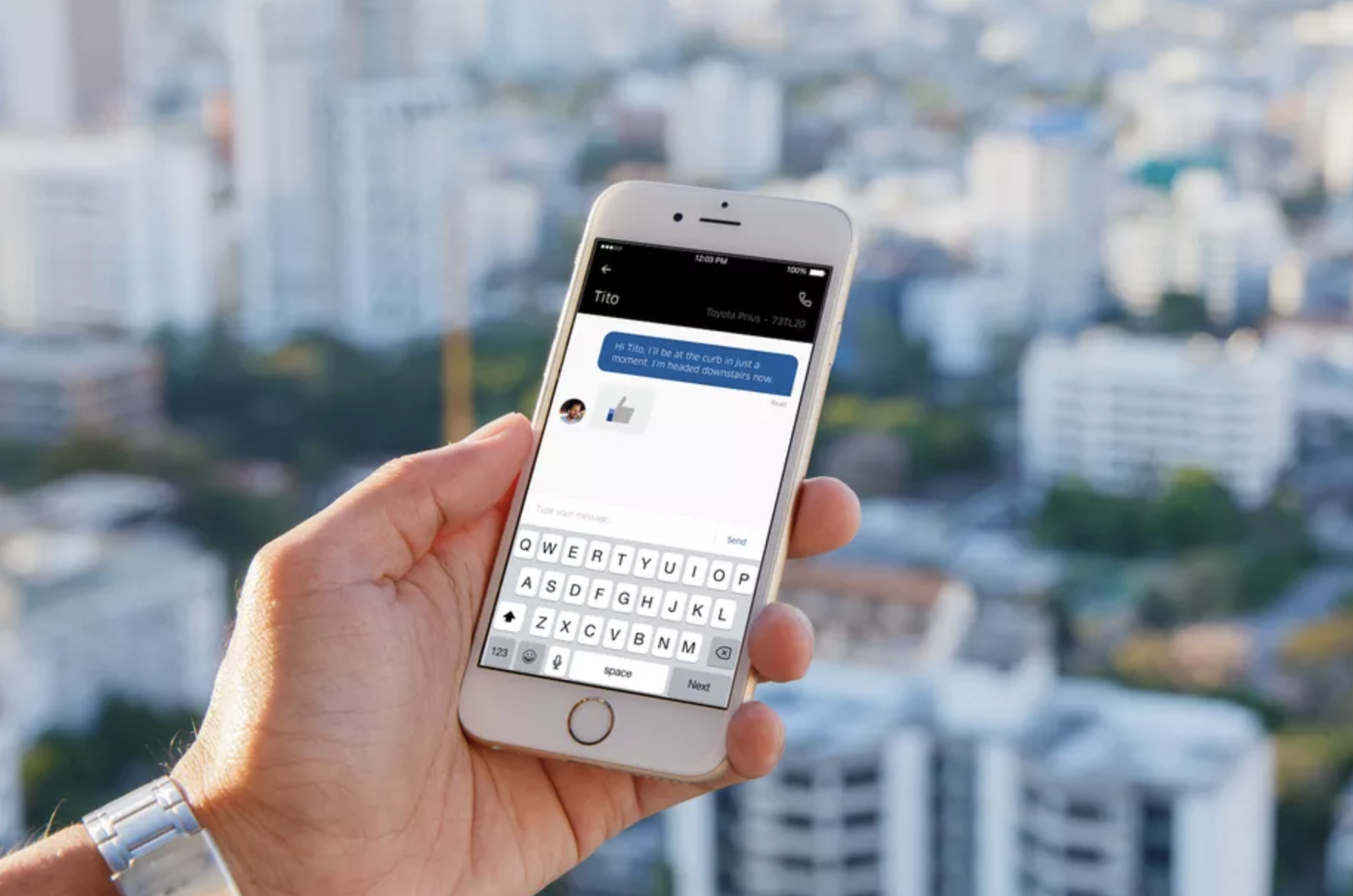
For such a simple feature, Uber accomplished a lot. But more can be done with a premium in-app messaging experience, one with a user experience as strong as WhatsApp or Messenger.
Other global on-demand apps are capitalizing on in-app chat and messaging in their applications by adding more features and creatively using them to benefit the experience of both supply and demand.
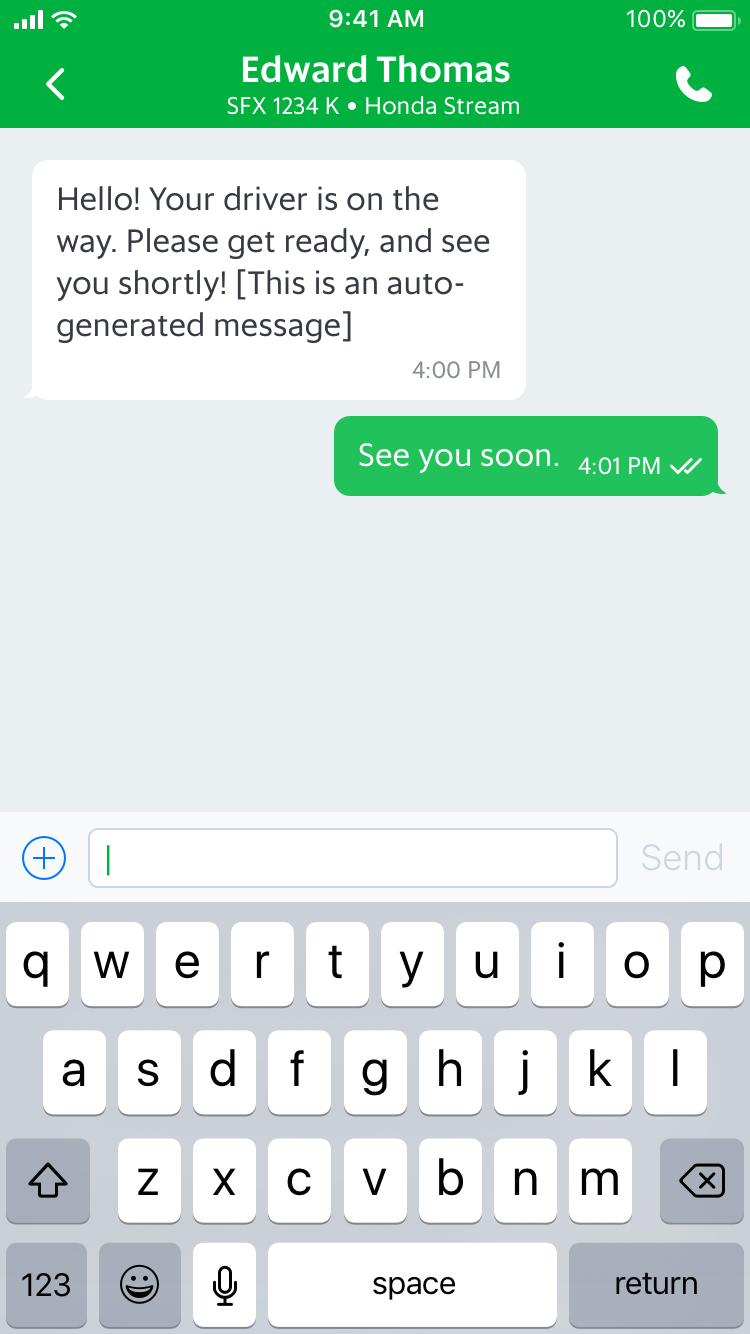
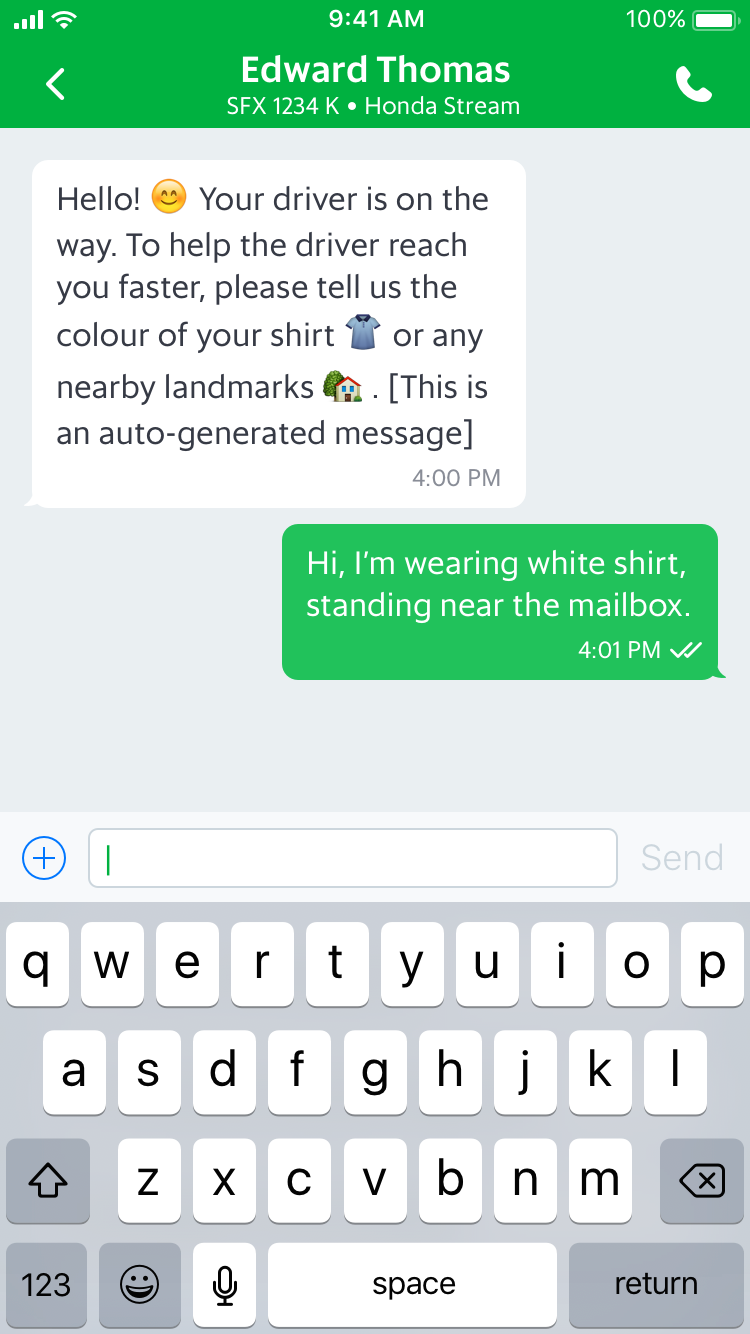
Grab, one of the top ride-hailing apps in Southeast Asia, was able to reduce booking cancellations by 50% and found that 33% of all rides in Singapore use the Grab-chat feature. Grab’s chat not only connects drivers and riders, but they also have automated messages, allow riders to share photos of their location, and other features that have reduced calls and booking cancellations.
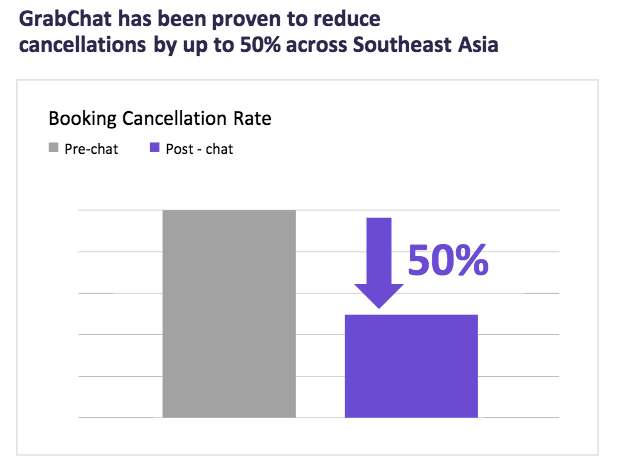
While we see global on-demand companies achieving great results with in-app chat – from a better post-purchase user experience to a reduction in canceled bookings – there’s still ample opportunity for real-time chat and messaging.
On-demand apps can achieve more with premium in-app messaging
Since the on-demand economy depends on the timing of demand – when and where the user wants the good or service – real-time in-app messaging is perfect for delivering “on-demand” communication.
Here are some potential areas where Uber and Grab – and other on-demand applications – can improve their post-purchase experience.
- In-app messaging can “humanize” the driver and lead to fewer booking cancellations
- In-app messaging gives both sides of the market privacy and a unique ID
- Your service can reduce calls and SMS that can become costly from services that mask phone numbers
- You can track sanitized in-app user messaging data from each user’s unique ID to optimize your logistics and messaging experience
- Suggested messages can help service providers and users alike easily respond to each other and, if they’re driving, help them respond safely
- Sending media files allows you to send audio notes or images of pickup locations so drivers can safely listen to your note or view points of interest around the pickup location
- Native custom data allows you to embed information like maps or location information in the messaging interface
On-demand + in-app messaging = transparent communication on-demand
No matter your on-demand service, premium in-app messaging helps coordinate multiple sides of the marketplace and bring transparent communication to your post-purchase user experience for both supply- and demand-side. You can reduce calls and cancelled bookings. You can empower your supply-side to communicate openly and safely so they can be as successful as possible. With a chat and messaging API and SDK, you can also launch your in-app messaging efficiently and concentrate your engineering resources on your app’s primary goals.










